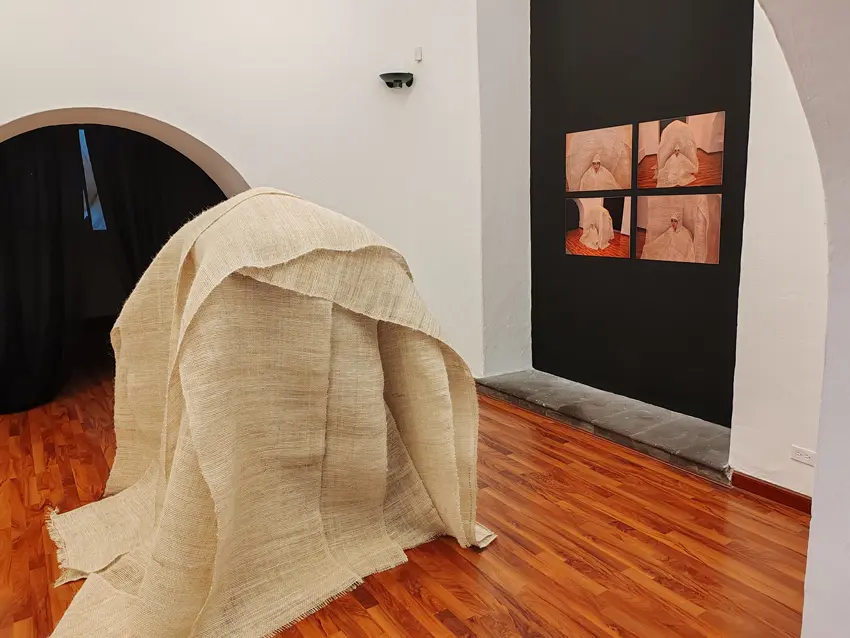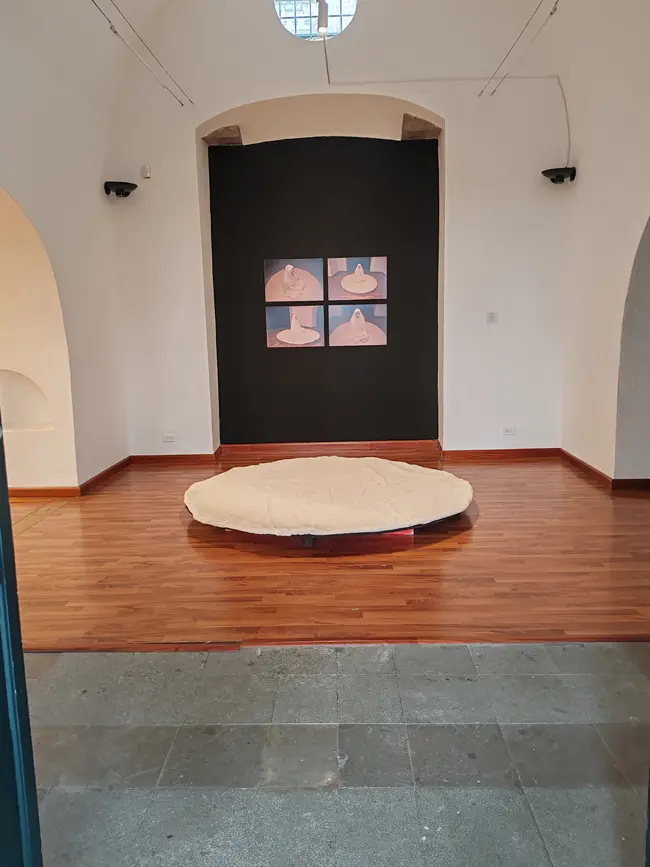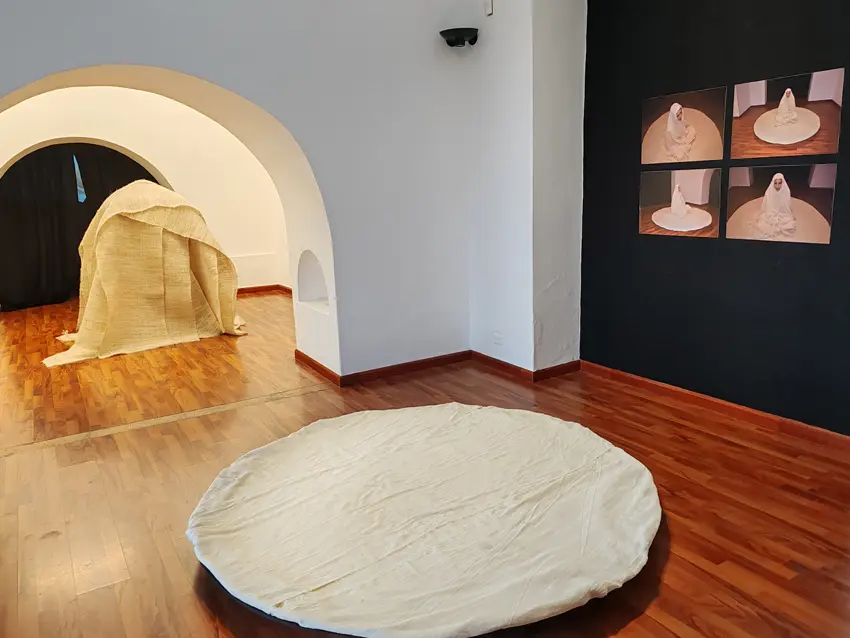SASKIA CALDERÓN
Exhibition TAKI ACLLA
Curator: Rosa Martínez
Year: 2024
Location: Centro Cultural Metropolitano. Quito, Ecuador
The exhibition Taki Aclla takes its name from the singing virgins who, in pre-Hispanic cultures, were chosen to perform ritual functions of connection and praise to the sun, the moon, the Pachamama (mother earth), or the mountains, known as apu in their original language. Taki aclla in fact means “chosen woman musician.”
Taki Aclla is part of a series of projects by artist Saskia Calderón (Quito, Ecuador, 1981), based on the role of pre-Hispanic women and the funerary practices of the Andean worldview, in which death was not understood as an end but as a rebirth. The artist thus aligns herself with the political practices of ecofeminism and environmental protection, which led her own country to become the first to recognize the living character of natural elements in its Constitution.
Saskia Calderón now presents two works that revive the pre-Hispanic female singer of the Tahuantinsuyo—the name of the territories that made up the Inca Empire—through two performances of the same name, the first held outdoors in 2023 and the second created in her studio in 2024. The video documentation of both will be exhibited at the Centro Cultural Metropolitano after the artist performs the two pieces live on the opening day.
In the first, Saskia Calderón appears seated at the center of a large white circular canvas in a bright green open field. Also dressed in white, she sings lyrical chants with a Western timbre from her vocal register as a soprano, since, in addition to being a visual artist, she is trained as an opera singer. In doing so, the artist creates a new voice that fuses cultures and knowledge.
In the second, alongside musical scores and photographs, funerary bundles shaped like suns and mountains are included, acting as installations that punctuate the exhibition space. As a whole, this action revives a cultural and anthropological territory dissolved by conquest and colonization, while exalting the woman who venerates the forces of the sun and nature. The melodies, composed by the artist herself, are based on a musical interpretation system in which each note corresponds to a letter, and the chosen ones form the word Tahuantinsuyo. These notes make up a melody in which a choir of pre-recorded voices—performed by the artist herself—accompanies her live voice. A layer of cabuya (pita fiber) covers her body, leaving only her face visible, and extends around her, forming a sculptural game in the shape of a double mountain that identifies the woman with pachamama.
Rosa Martínez
WORDS FROM THE ARTIST
“Through this project, I want to revive the ancestral knowledge and memories of the place where I was born. In this way, I reflect on my mestizo identity, the relationship between past and present, and through my role and voice as a singer, I seek a resurgence of extinct wisdoms and our past history, in order to rescue them from oblivion.”
“These installations are funerary because certain practices and pre-Hispanic knowledge that once connected us differently to the world have died within me.”







